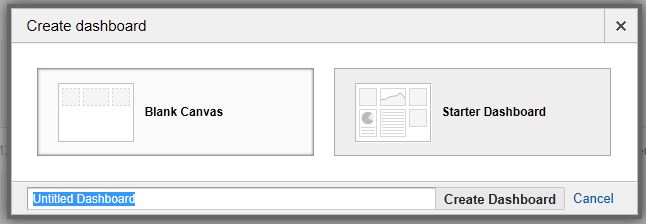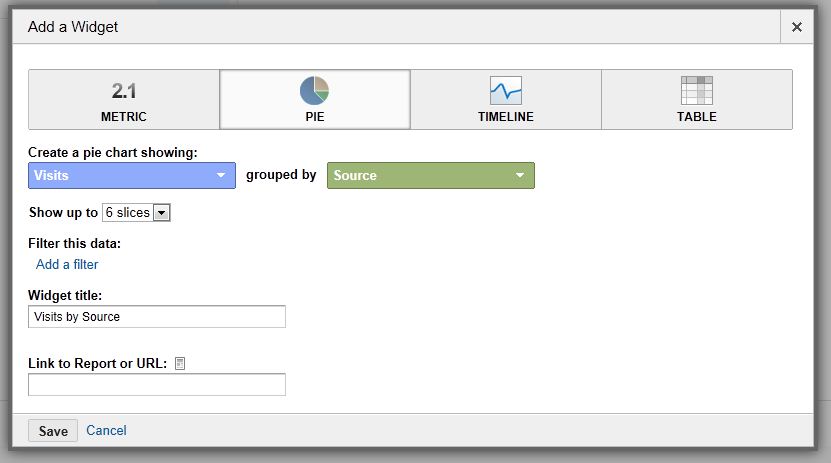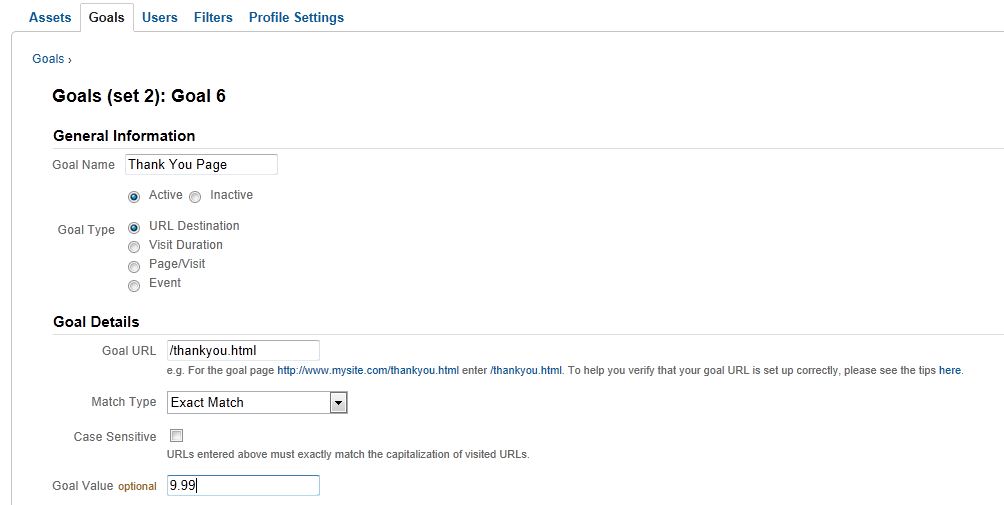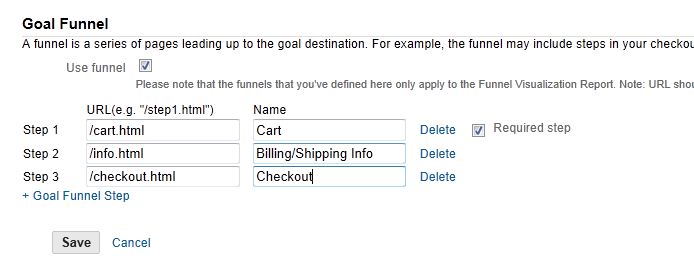Google Analytics is a fantastic analytics tool, and it's gotten pretty easy to get some really sophisticated data out of it. Working in SEO can mean looking at a bunch of different metrics and doing a lot of deep dives into some serious data, and that's all well and good. But if you don't have some quick ways to get some top-level ideas of how the site is doing, you'll lose sight of the big picture really fast - and that's when performance suffers. That's why we need dashboards.
Even if you're not a Google Analytics pro, you can set up a dashboard that lets you check in on site health, so you can make sure you're on track for success. Here are some tips for setting up dashboards and configuring reports in Google Analytics.
The Basics: Set up the Dashboard
In Google Analytics, go to the Home tab, select Dashboards on the left-hand side, and select New Dashboard. You'll have the option to create either a Starter Dashboard or work from a Blank Canvas; then name your dashboard and you're ready to get started!
What Should Go On My Dashboard?
A good dashboard should quickly answer the questions you need to ask in order to figure out "How are we doing?" You should know what question each metric on your dashboard is trying to answer. If you're looking for a quick website checkup, the reports in the Starter Dashboard (Visits, Average Visit Duration, Goal Conversion Rate, Visits by Traffic Type, Visits and Avg. Duration by Country/Territory, Goal Completions and Conversion Rate by Source/Medium, Visits and Pageviews by Mobile) will probably get you most of the way there.
Only you can decide what data is important to you. I have to say that these metrics aren't exactly how I would set up a site checkup dashboard. Mobile or international traffic, for example, aren't important to every business website. Here are the questions I need to answer with a site checkup dashboard, and the metrics I use to answer them.
- Are we getting more, less, or the same amount of traffic?
- Visits and page views over time. I like to add in page views because if we're getting a ton more traffic but not a concurrent bump in page views, the reduction in pages per visit is worth a look-see.
- Are people hanging out once they get here?
- Average Visit Duration and Bounce Rate. For some sites, one page is all it takes to get to the good stuff, so make sure you interpret this data in the context of your individual site.
- Are we making money?
- Revenue from the Ecommerce report. If you don't have an Ecommerce site, you can still attach a dollar amount to your Goals and put Goal Value in your dashboard instead (more about Goals in a minute). If you do have an Ecommerce site, get that Ecommerce report configured and get reporting! Google's instructions on how to do this start here.
- Where is traffic coming from?
- Visits by Traffic Type. Organic, Paid, Direct, Referral and Other will probably be your main traffic sources.
- Are people doing what we need them to do?
- Goal Conversion Rate. I actually set up an entire separate dashboard just for site goals, so all I'm looking for in my site checkup dashboard is a basic percentage of the people who come to the site who are doing what we want them to.
And that's it. Just a few key metrics to check on overall site health, and that's my site overview. Then, when I need to check on the health of specific projects or channels, I have separate quick-view dashboards for those.
I've just touched on a key tenet of actionable dashboarding: you can have more than one dashboard. As a general rule of thumb, if your dashboard is much bigger than your monitor (like your big monitor, not your laptop monitor), it's going to stop being as useful. This is just a rule of thumb, your mileage may vary, but if you're looking at too many data points consider splitting them up into separate dashboards (like Site Overview, Goal Performance, and SEO Metrics, for example). That way you can get what you need when you need it.
The second key tenet of actionable dashboarding: dashboards are about what is happening, not why its happening. Figuring out why it's happening is when you go leaping and diving in to the data. Dashboards are just about quickly checking on stuff and then identifying and prioritizing said data diving as needed. Resist the temptation to add too much "why it's happening" data to your dashboard "so it's all in one place." You do not want a furrowed brow when you're looking at your dashboard. You want to be all like "Check! Check! Check!" That said, make sure you know why things are happening before you show your dashboards to other people - their first questions are always going to be something along the lines of "What happened there?"
Adding Widgets to Your Dashboard
We've covered what you might want to put on your dashboard but once again, everyone has different data needs. Here's how to add just about anything to a Google Analytics dashboard.
From the dashboard screen, select Add Widget at the top. If you start from a Blank Canvas worksheet, it will automatically prompt you to add a widget upon creating the dashboard (A widget in Google Analytics just means bit of data or a mini-report, if you will).
The Add Widget dialog box will ask what you want to measure and how you'd like it displayed. You can even apply filters! Right there in the dialog box! It is pretty much the very coolest.
Filtering is great if you'd like to view specific segments of data within the dashboard, without filtering the whole dashboard. For example, you might want to view visits from branded vs. non-branded search traffic. You'd add two Visits widgets: one only showing visits from searches containing your brand terms, and one only showing visits from searches NOT containing your brand terms.
Now say you're cruising around through other non-dashboardy parts of Google Analytics and you say "GASP! I must have this specific piece of data as part of my dashboard, posthaste!" That is totally how you talk. Simply select Add to Dashboard at the top of the report, select the dashboard you'd like to add to, and Google Analytics will pop up all of the available metrics in that report for you to widgetize to your heart's content.
Let's Talk About Goals
If you're an Ecommerce site, you can modify the Google Analytics code in your shopping cart to capture product and revenue data, which is SO NICE. Not everyone's website conversions result in Ecommerce sales, though - and many websites actually have more than one target action they'd like users to perform. To that end, Google Analytics has Goal Tracking.
To set up Goals for your account, select Admin at the top right of your screen, select the profile you want to use, and then select Goals.
Goals can be configured around users visiting a certain page, staying on site for a target amount of time, exceeding a target number of pages in one visit, or when customized events take place. Custom Events are a bit more advanced and require some tweaks to the Google Analytics code on your site, so today lets just focus on visiting a page. The most common goal set up on a website is when users hit a Thank You or Receipt page after making a purchase:
Just tell Google Analytics which URL you want to track, assign a dollar value if you can, and start tracking!
If you're interested in seeing how users interact with your funnel process before they convert, you can set up funnel tracking for your Goals as well.
This is really useful if you're trying to optimize your conversion rate - is there a step in your funnel that's causing users to abandon?
Notice that Google gives you 4 sets of 5 goals each to work with. That means you can customize your goals to track metrics that are important to you, beyond just a purchase! This might include:
- Downloading a free trial
- Signing up for an email newsletter
- Adding an item to a cart
- Spending more than 1 minute on site
- Visiting the Contact Us page
- Downloading a whitepaper
- Visiting from a social media site
Any action that users take on your site that you know leads toward conversion down the line may be important. Notice that not all of these goals are revenue-generating or of equal value to your business. For this reason, I like to include only Goal Value and Goal Conversions from my revenue-generating goals on my Site Overview dashboard; my other goals have their own dashboard. I find that including less-important goals alongside top-priority goals on an overview dashboard a.) muddles the data (yes we had 5,000 goal conversions, but 4500 of those were Contact Us page views) and b.) tends to mean the less-important goals don't get the attention they need.
By this time you should have a Google Analytics dashboard in place that allows you to quickly gauge how your site is doing and prioritize actions to make it better. Take time every now and then to make sure you're getting what you need from your dashboards, and add and subtract widgets as needed. Over time, you'll have a robust view of site health that you can digest in easy bites. Happy tracking!







